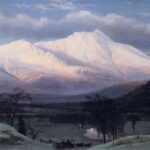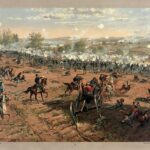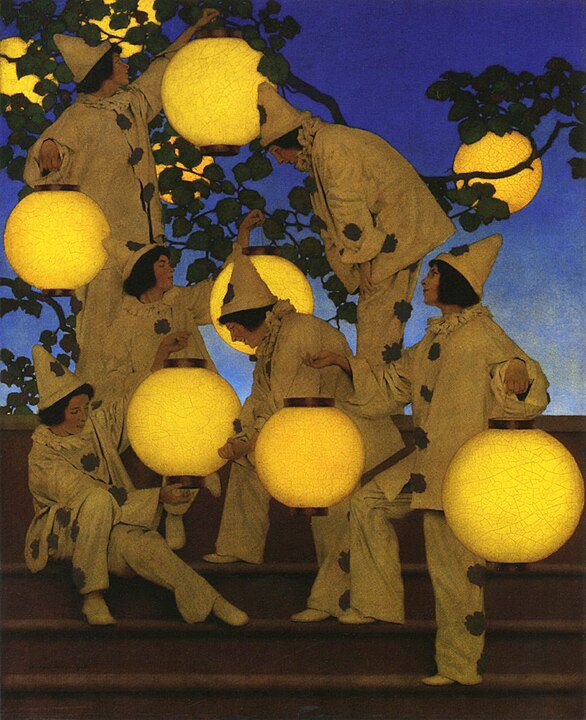
Maxfield Parrish (1870–1966) was an American painter and illustrator, renowned for his distinctive saturated hues and idealized neo-classical imagery. Born Frederick Maxfield Parrish in Philadelphia, Pennsylvania, he emerged as one of the most prominent figures in the art world of the early 20th century, with a career that spanned more than half a century and included works ranging from magazine covers and advertisements to murals and landscape paintings.
Parrish’s education in art began at the Pennsylvania Academy of the Fine Arts, followed by a stint at the Drexel Institute of Art, Science, and Industry (now Drexel University), where he studied under Howard Pyle, a luminary in American illustration. Pyle’s influence was instrumental in shaping Parrish’s early career as an illustrator. However, it was Parrish’s unique style, characterized by vibrant colors and enchanting, dreamlike scenes, that set his work apart and captivated the American public.
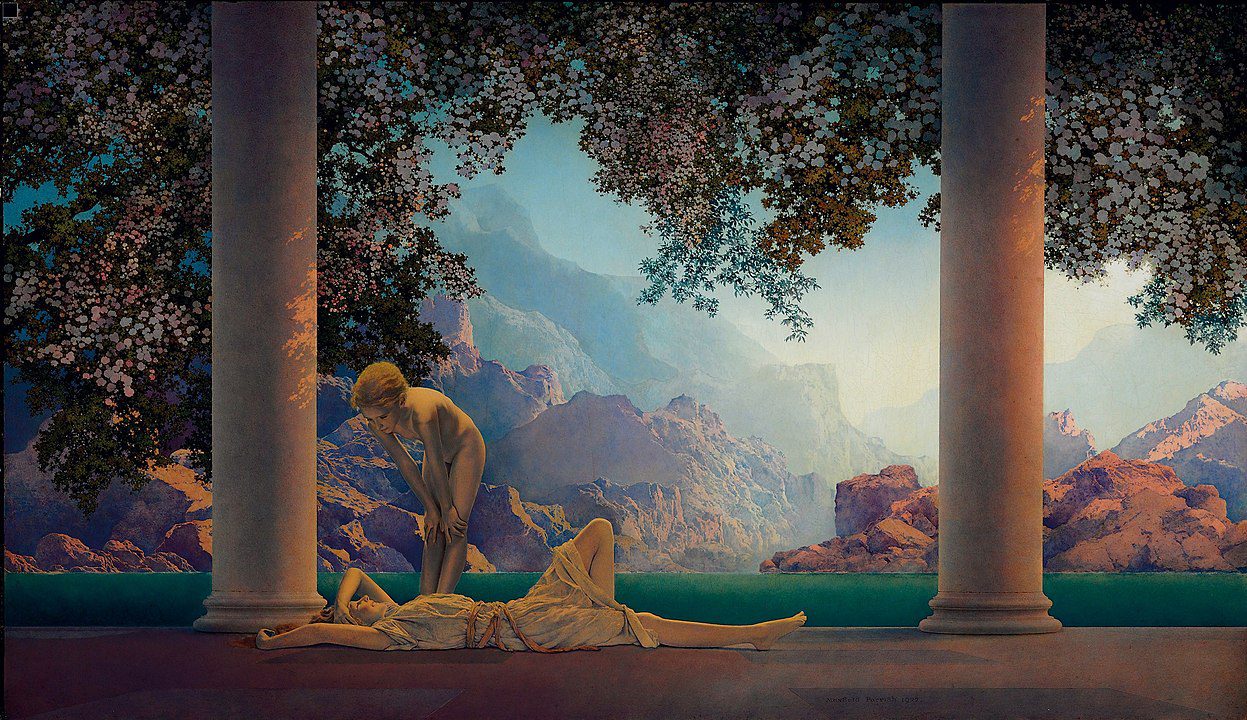
One of Parrish’s signature techniques was his use of luminous colors—particularly a rich, intense blue that would come to be known as “Parrish Blue.” This, combined with his mastery of glazing, a process involving multiple layers of transparent paint, allowed him to achieve remarkable depth and intensity in his works. His landscapes and figures seem to glow from within, creating a magical, otherworldly quality that became synonymous with his name.
Fantastic scenes
Parrish’s work encompassed a variety of subjects, including fantastical scenes populated by fairies and mythical figures, idyllic landscapes, and serene garden scenes. His illustrations graced the covers of popular magazines such as “Harper’s Bazaar,” “Collier’s,” and “Scribner’s,” and he produced numerous advertising images for companies wanting to associate their products with the beauty and elegance his work evoked.
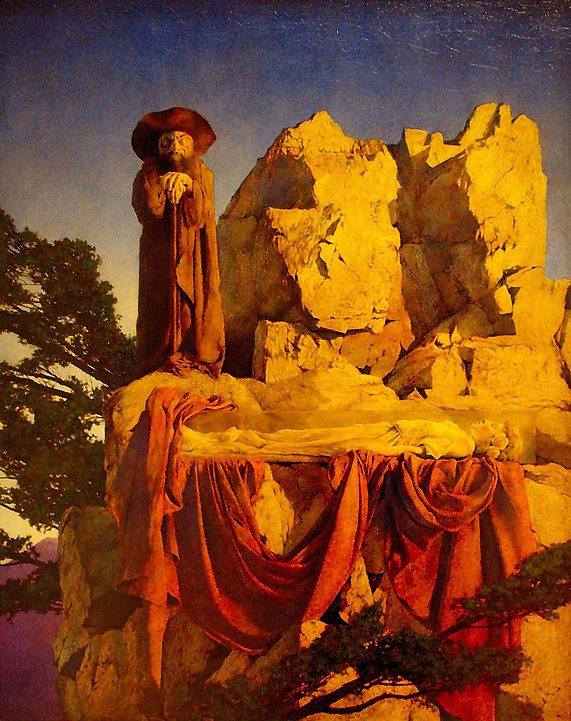
In addition to his commercial successes, Parrish also undertook ambitious mural projects, most notably for the Pennsylvania Academy of the Fine Arts and the Curtis Publishing Company. These large-scale works showcased his ability to translate his enchanting visions into monumental forms, further solidifying his reputation as a master of American art.
Despite the commercial nature of much of his work, Parrish maintained a deep commitment to artistic integrity and personal vision. He spent years on some projects, driven by a perfectionist’s attention to detail and a relentless pursuit of beauty. In his later years, Parrish focused increasingly on landscapes, particularly those inspired by the views surrounding his home and studio in Cornish, New Hampshire, part of the artist colony known as the Cornish Colony. These works, characterized by their tranquil beauty and luminous color, are among his most beloved.
Impact on culture
Maxfield Parrish’s impact on American visual culture cannot be overstated. His images became icons of the American imagination, influencing not only the world of illustration but also the broader realms of advertising, design, and popular culture. His work continues to be celebrated for its beauty, craftsmanship, and unique vision of an idealized world.
Parrish’s legacy is also marked by his influence on future generations of artists and designers, who have drawn inspiration from his use of color, his meticulous compositions, and his ability to evoke a sense of wonder and nostalgia. Today, his works are held in high regard by collectors and museums alike, and his influence is seen in the ongoing popularity of fantasy and neo-classical imagery in contemporary art and illustration.
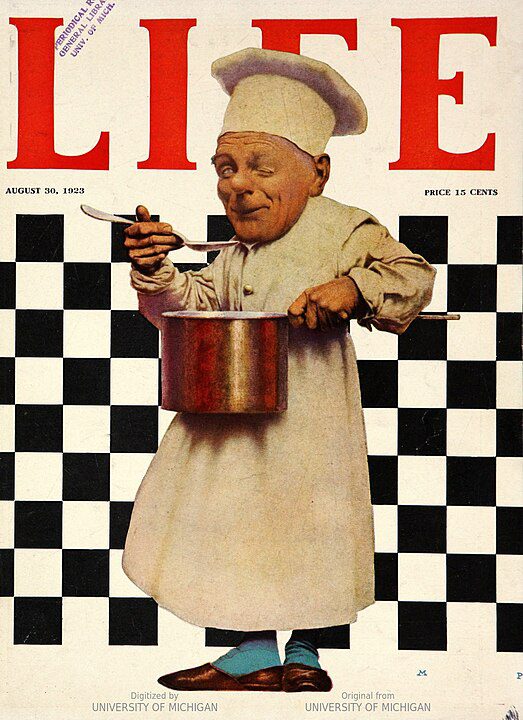
Maxfield Parrish lived a life dedicated to the pursuit of beauty, through a blend of commercial success and artistic excellence. His work invites viewers into a world where the fantastical becomes tangible, and the everyday is infused with magic and color. In doing so, Parrish created a lasting legacy that continues to enchant and inspire, a testament to his status as one of the most beloved American artists of the 20th century.
Maxfield Parrish Timeline
- 1870 – Born in Philadelphia, Pennsylvania.
- 1888–1890 – Attended Haverford College.
- 1892 – Began formal art studies at the Pennsylvania Academy of the Fine Arts.
- 1893 – Studied illustration at the Drexel Institute under Howard Pyle.
- 1897 – Created illustrations for Mother Goose in Prose.
- 1898 – Illustrated The Reluctant Dragon by Kenneth Grahame.
- 1898 – Moved to Plainfield, New Hampshire to establish his studio.
- 1900 – Produced murals for the Curtis Publishing Company.
- 1904 – Completed The Dinky Bird for Poems of Childhood.
- 1905 – Created The Lantern Bearers.
- 1909 – Began major advertising commissions for national corporations.
- 1910 – Expanded magazine work for Ladies’ Home Journal.
- 1914 – Continued major illustration projects for Ladies’ Home Journal.
- 1916 – Completed murals for the St. Paul’s School dining hall.
- 1922 – Painted Daybreak.
- 1923 – Exhibited widely during the height of his commercial success.
- 1925 – Published the illustrated book The Knave of Hearts.
- 1930 – Produced significant advertising imagery during the early 1930s.
- 1936 – Ended illustration commissions to focus on landscape painting.
- 1940s – Created luminous New Hampshire landscapes during his later career.
- 1966 – Died in Plainfield, New Hampshire.


